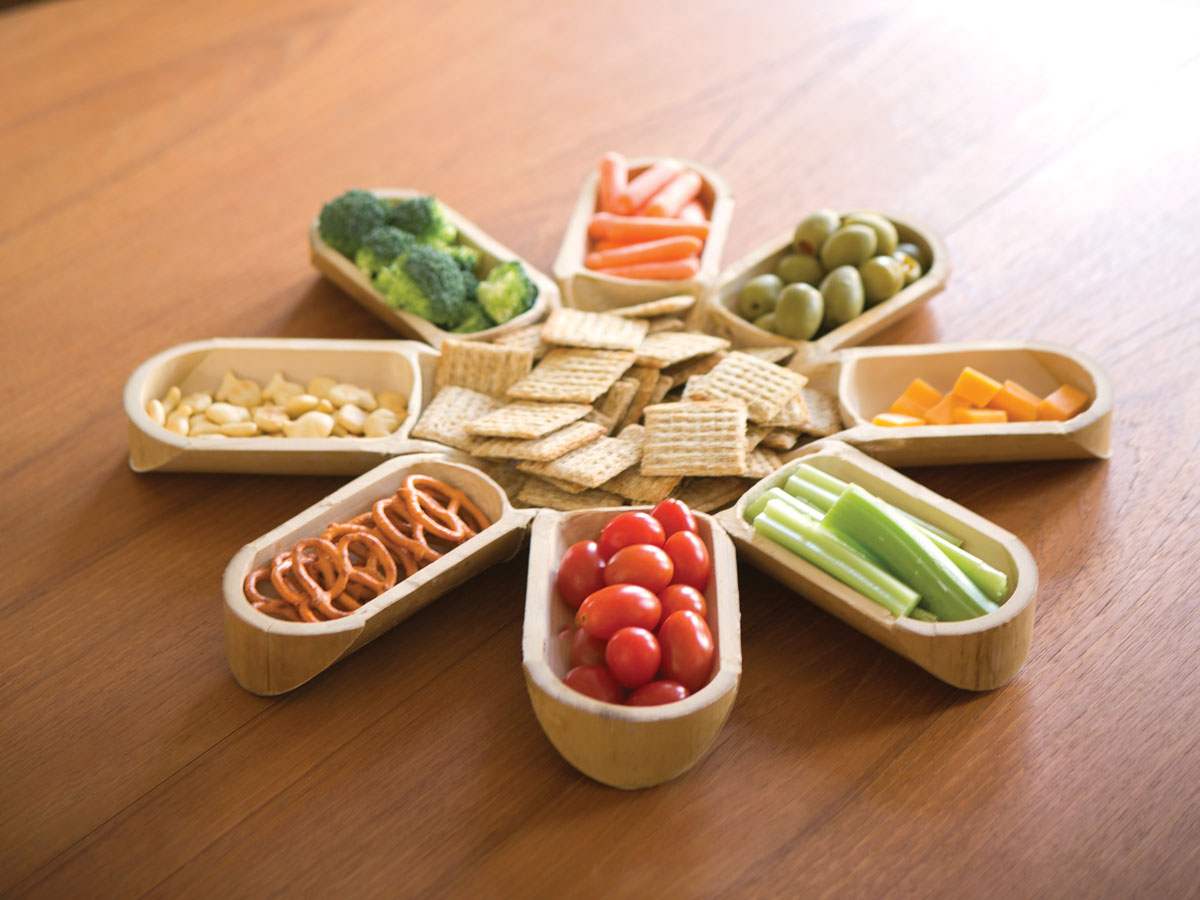Somewhere between grass and wood on God’s celestial materials list, bamboo is exceptional stuff. Lightweight, strong, elastic, and durable, it’s one of mankind’s earliest building materials. It works, bonds, and finishes well. Many of the more than 500 distinct species have been used to make rafts, fishing poles, blowguns, fences, houses, and all the furniture, flooring, blinds, and rugs therein — even skyscraper scaffolding. You can use bamboo chopsticks to eat tender bamboo shoots. Its leaves and shoots even possess medicinal properties. It’s such a perfectly renewable resource you can almost watch it grow — often between 2 and 4 feet a day.
Here’s an hors d’oeuvre tray you can make with only bamboo and a little glue. Bamboo poles are available from such sources as calibamboo.com or bambooandthatchetc.com, or if you live in a temperate or tropical clime, you may be able to find some growing locally. Harvest it after it loses its foliage and thoroughly dries to a nice beige.
You’ll need enough running feet to yield four 9″ finished pieces that include a node, 5-1/2″ of plain hollow material on one side of the node and about 3-1/2″ on the other side (drawing “bamboo segment”).
If you want to make a smaller tray, use 3 pieces and adjust the dimensions and angles accordingly.





